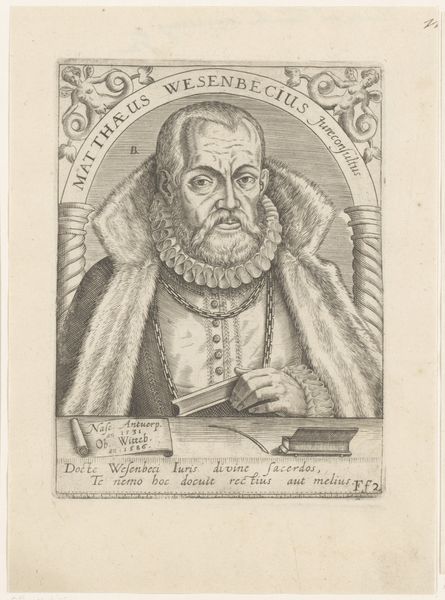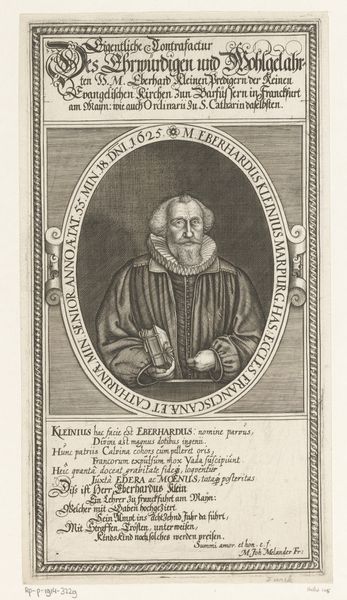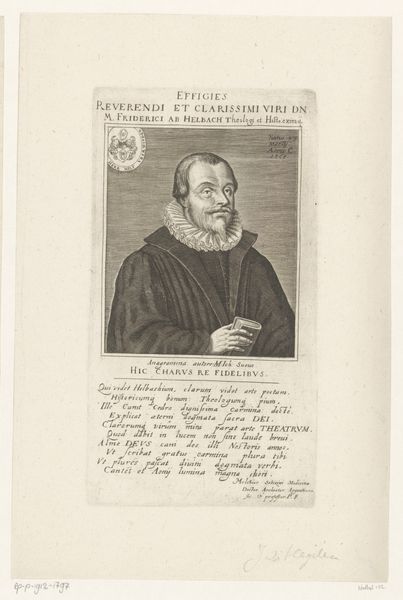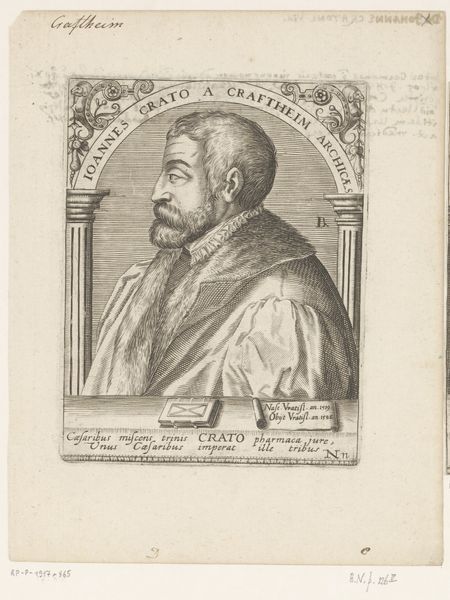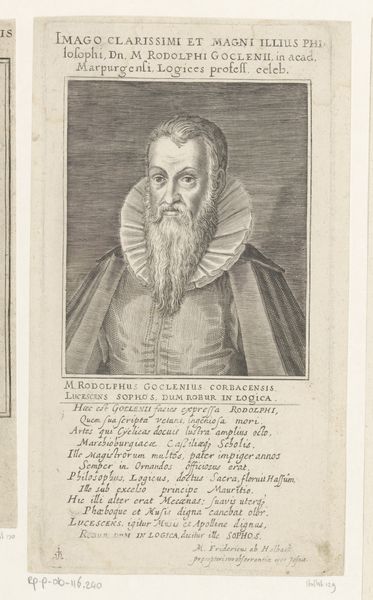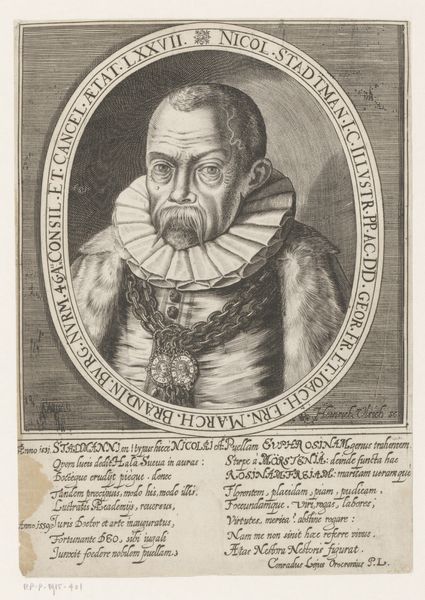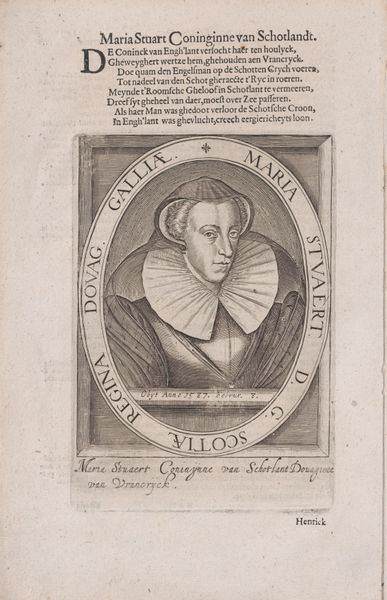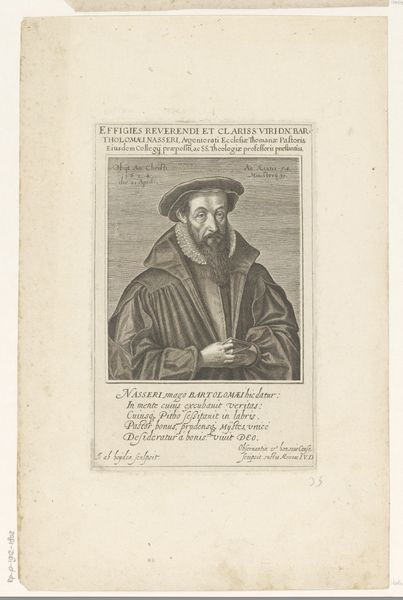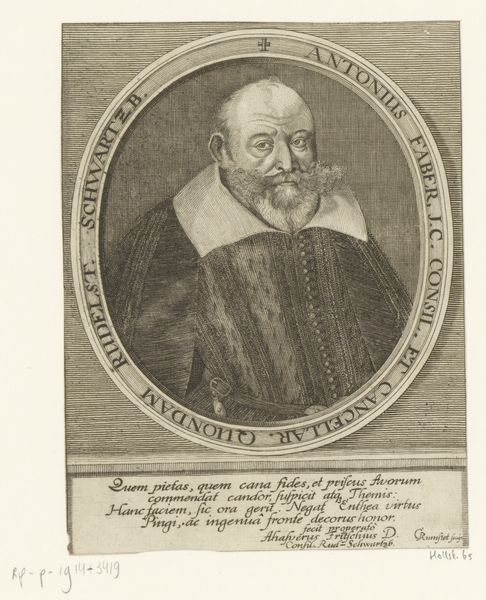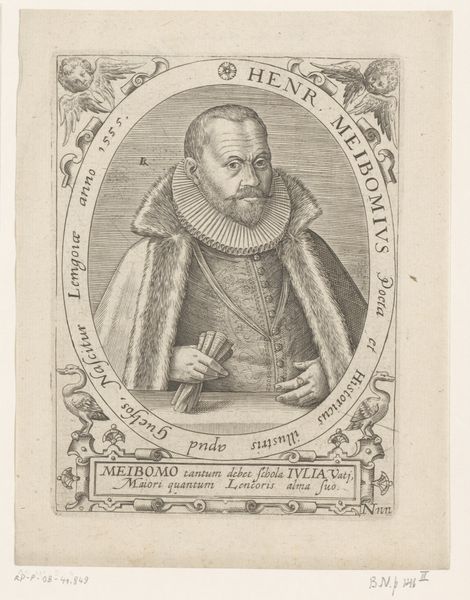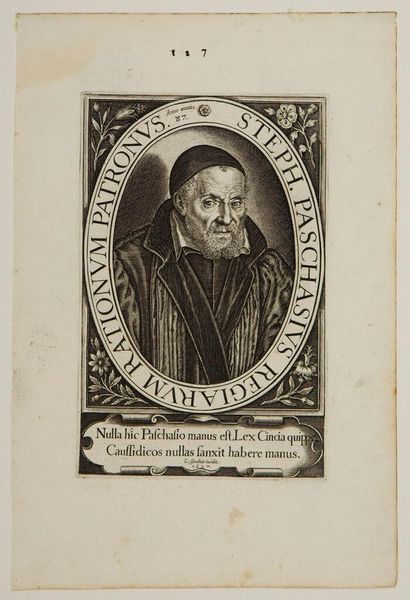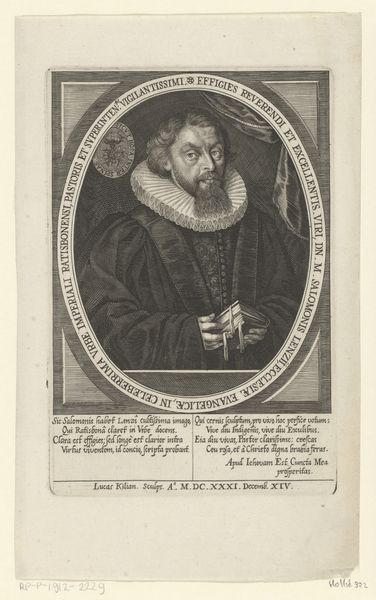
engraving
#
portrait
#
11_renaissance
#
history-painting
#
engraving
#
realism
Dimensions: height 138 mm, width 98 mm
Copyright: Rijks Museum: Open Domain
Curator: Here we have a portrait from 1613 entitled “Portret van Hieronymus Örtel,” now held in the Rijksmuseum. It's an engraving of a gentleman by Heinrich Ulrich. The intense detailing is quite striking. Editor: My first thought is the elaborate ruff, almost shielding him from view. It speaks volumes about status but also maybe hints at vulnerability. I wonder about the process of crafting this engraving; what tools were used to achieve that fine level of detail? Curator: The ruff is definitely central to how Örtel is being presented, as is the placement of his coat of arms right above his head. The clothing style tells us about wealth and societal standing. This wasn't simply a visual depiction but a construction of identity—power and legacy were encoded into these portraits. Editor: Precisely. Think of the engraver, Ulrich, meticulously carving lines into a metal plate, each one representing wealth, social standing, the very essence of Hieronymus Örtel. It's almost a form of early mechanical reproduction creating status through repeatable means. Who would commission an image like this, and why? Curator: Absolutely, it underscores how images functioned as currency. I am immediately drawn to the gaze: steady and maybe with a little fatigue. How can we consider the sitter's perspective—Örtel was seventy years of age when this engraving was created—on such an orchestrated presentation of himself? Editor: We might explore this in relation to printmaking, given the relatively high costs associated with having one's portrait produced. Such material conditions certainly limited circulation and dictated who would become ennobled, quite literally etched into history. Curator: Considering this work, it highlights the intersection of personal representation and societal projection. He wished to show authority but, with a closer look, you can sense a much more human story. Editor: Examining “Portret van Hieronymus Örtel” today, let's take time to consider not only the person, but also how processes can immortalize individuals. It also offers new thoughts regarding artistic choices influenced by economics during the Renaissance period.
Comments
No comments
Be the first to comment and join the conversation on the ultimate creative platform.
